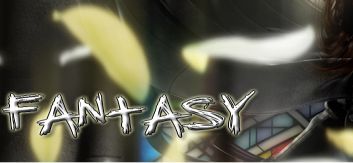Soul Calibur II
From Wikipedia, the free encyclopedia
Developer(s) Namco
Publisher(s) Namco
Release date(s) July 30, 2002 (Arcade)
August 26, 2003 (Consoles)
Genre(s) Versus Fighting
Mode(s) Single player, multiplayer
Rating(s) ESRB: T (Teen)
Platform(s) Arcade, PlayStation 2, GameCube, Xbox
Soul Calibur II is a fighting game in the Soul series. It was developed and published by Namco, and released on August 26, 2003 in North America.
Soul Calibur is the name of the holy sword, created to battle the evil sword Soul Edge, which the games revolve around.
Compared to Soul Calibur, Soul Calibur II boasts improved graphics and introduces new characters, stages, and music. With respect to game mechanics, the two games are very similar, with Soul Calibur II generally considered an updated version of Soul Calibur.
Key game engine improvements include:
More powerful "step" and "avoid" systems, which made evading vertical attacks noticeably easier (see Criticisms).
Arena walls, rather than ring-out ability on all sides, and subsequent wall-specific moves.
A three-step Soul Charge system.
A clash system, one that is used when two attacks would hit each other resulting in a white flash and no damage to either opponent.
Contents [hide]
1 New characters
2 Modes and Features
3 Criticisms
4 Images
4.1 Box art
5 See also
6 External links
[edit]
New characters
New Soul characters introduced in Soul Calibur II :
Cassandra Alexandra - Sword and Shield
Charade - Imitative Power
Necrid (Only on Home Versions) - Transforming Energy called Enigma
Raphael Sorel - Rapier
Talim - Dual Bladed Tonfas
Hong Yun-seong (spelled Hong Yunsung until Soul Calibur III) - Dao
Raphael and Talim's playing styles are entirely unique, while Cassandra and Yun-seong's are derived from established characters Sophitia and Hwang, respectively. Charade, like his predecessors Edge Master and Inferno, switches his style to match existing characters' movelists with each individual round of fighting. Each of the home versions also included Necrid, who was not included in the arcade version of Soul Calibur II. Necrid, like Spawn, was personally designed by comic book artist Todd McFarlane. It is also notable that each of the three home console versions had unique characters exclusive to that version:
Heihachi Mishima (from Tekken series for the PlayStation 2) - Gauntlets
Link (from the Legend of Zelda series for the GameCube) - Sword and Shield
Spawn (from Todd McFarlane's comic book series for the Xbox) - Hand Axe
Rounding out the characters were returning fighters Seong Mi-na and Sophitia Alexandra from both Soul Edge and Soul Calibur. Also, the North American and European versions of the game contained three limited-play characters loosely based on characters from Soul Calibur:
Assassin (generic thug, with a movelist derived from Hwang) - Dao
Berserker (generic thug, with a movelist derived from Rock) - Double-Edged Axe
Lizardman(generic lizardman from the army created by the cult order, Fygul Cestemus, in Soul Calibur) - Sword and Shield
From the Soul Calibur character roster, the ones that did not return for Soul Calibur II as characters themselves were Hwang, Rock, Lizardman (as the lizardman in the game is not the same one as in Soul Calibur), Siegfried, because he is now Nightmare, and Edge Master. Inferno is in the game, only this time, he is not a playable character.
[edit]
Modes and Features
Modes and other features added to the Home Versions:
Soul Calibur II presented the normal modes from most fighting games: Arcade (Consisting on 7 random battles, the 7th being a Destined Battle against a set character, then the Boss battle against Inferno), VS Battle (2P player mode), Team Battle Mode (similar to arcade, but with teams of 2-3 characters and without cutscenes or endings), Time Attack (fight against the clock to gain records), Survival Battle and Training Mode. There is also Extra versions of these modes, intented to allow the use of the Extra Weapons.
A feature returned from Soul Edge is the inclusion of Extra Weapons. Instead of Soul Edge's system of different stats, this one is based on power %, defense % and special abilities (drains energy, pass through defense, etc). Each character got 12 different weapons, from the standard (basic) weapons for 1P and 2P to the powerful Ultimate Weapon. Also each one was granted a Soul Edge version of their arms and a Joke Weapon, weapons with bad stats and effect, and with unique, and funny, hit sounds. Each weapon is given a backstory in the Weapon Gallery.
The Weapon Master Mode is made as a replacement of the Edge Master Mode of Soul Edge. The mode presents an history set in an alternate world, while the player moves in a map divided in "regions" (named after stars) and fight enemies to gain experience points (and raise the "rank" of the character) and money (which could be later used to bought weapons, art, costumes and videos).
As in Soul Calibur, there is a Museum, containing character artwork, various videos (like Arcade Intro or WMM intro and Ending) and Weapon Exhibition (or katas). There is also the Profile Viewer (to see character's stories) and Battle Theather (to see CPU vs CPU battles).
Like before, some characters are granted with 3rd costumes, purchased in Weapon Master Mode. Out of the 25 selectable characters, only 12 were granted a 3rd costume: Astaroth, Cassandra, Ivy, Mitsurugi, Nightmare, Raphael, Seong Mi-na, Sophitia, Taki, Talim, Voldo and Xianghua. It should also be noted that Link has four costumes.
[edit]
Criticisms
Media reviews of Soul Calibur II were overwhelmingly favorable, with the game immediately hailed by many reviewers as the best fighting game in existence, even surpassing its immediate rival Virtua Fighter 4: Evolution, which had been released during the same month. [1]
In general, Soul Calibur II's appeal is formidable, but as time went on, many fans became frustrated by some of the engine's mechanics. Most of these issues concern how defensive the gameplay is. For example, a common complaint involves the overly powerful nature of the "step". By "step-guarding", a player can sidestep (to avoid vertical attacks) and immediately block (to counter horizontal attacks), rendering them practically invulnerable. Another common complaint is the "2-guard", a technique that allows players to block during times in which they logically should not be able to do, such as after having an attack deflected by a "Guard Impact".
Another common complaint involved the gross simplification of the Soul series' most prominent feature: the Guard Impact, which deflects an opponent's attack, leaving them open to counterattack. Rather than require a rotation of the joystick or d-pad along with the guard to perform the Guard Impact, Guard Impacts were made easily accessible by simply pressing Guard and either forward or back (depending on the altitude of the incoming attack and hence the appropriate parry). This criticism became so prominent that Namco subsequently restored the Guard Impact system to its original state in Soul Calibur III, as well as expanding on its nature with the "Just Impact".
|
|
|||||
|
|
|||||
|
|




